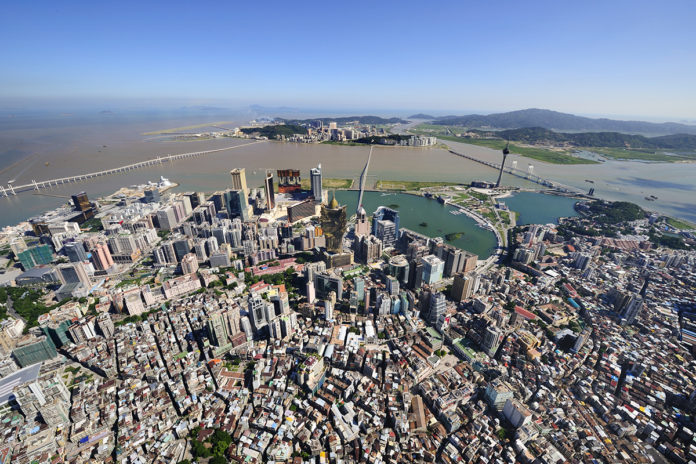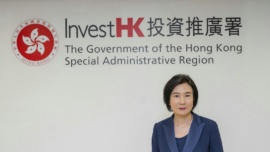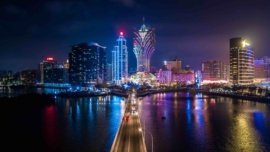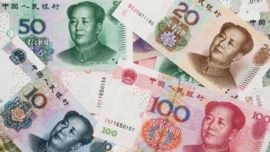In its first year of operation, Marina Bay Sands has become a Singapore landmark. Since opening last April 27, the casino resort, known as “MBS” has become Las Vegas Sands’ most profitable property, even though it has yet to be completed. “They have had an amazing year. Marina Bay Sands has become one of the world’s truly iconic tourist attractions, and one of the most profitable,” says HSBC senior regional consumer and gaming analyst Sean Monaghan. “The integrated resorts have also been great in terms of building Singapore’s tourist brand and ‘hip’ appeal globally,” he says. “Over 11 million visitors from the region and around the world have walked through our doors,” says a Marina Bay Sands spokesperson. “Marina Bay Sands is also experiencing solid momentum on the meetings, incentives, conventions and exhibitions (MICE) front, with over 1,155 deals sealed so far which will bring around 670,000 participants till 2012 to Sands Expo and Convention Centre, the biggest MICE facility in Singapore.” Marina Bay Sands is the most expensive stand-alone casino resort ever built, costing US$5.5 billion (MOP44 billion). It has 2,560 hotel rooms in three towers, a shopping mall, 122,000 square metres of convention facilities, and a three-tier casino with more than 600 tables and 1,500 machines. Fulfilling hopes Genting’s US$4.7 billion Resorts World Sentosa opened in February last year, and features a Universal Studios theme park along with a casino, plus (eventually) 1,800 rooms in six hotels, and retail outlets. The new casino resorts helped Singapore attract a record 11.6 million visitors in 2010. “The integrated resorts appear to be doing exactly what the Singapore government hoped they would when the plans for launching two integrated resorts and casino licenses were made,” says hospitality consultant Horwath HTL-Asia Pacific’s managing director, Robert Hecker. “Both properties complement each other,” says the dean of the University of Nevada Las Vegas’ Singapore campus, Andy Nazarechuk. “Marina Bay Sands seeks the MICE market and professional-type customers, and Resorts World Sentosa has captured the family and leisure market. As both properties mature, they will both grow their various revenue streams.” VIP hiccup Las Vegas Sands reported that Marina Bay Sands made US$305.8 million in adjusted earnings before interest, taxes, depreciation, and amortisation (EBITDA) in the fourth quarter of last year, with an EBITDA margin of 54.6 percent – both figures are company records. Over the eight months it was in operation last year, EBITDA was US$641.9 million and EBITDA margin 50.8 percent. Casino revenue was US$1.1 billion. In the fourth quarter alone, it was US$457.1 million, 10.3 percent more than in the third quarter. However, VIP volume was 20.6 percent lower in the fourth quarter than in the third – possibly a factor in the sudden departure of Marina Bay Sands chief executive Thomas Arasi in February, after barely 18 months in the job (See story in these pages). Genting reported that Resorts World Sentosa’s adjusted EBITDA was S$1.4 billion (MOP8.9 billion) last year, or US$1.1 billion. The company does not give a breakdown of gaming revenue (See story on these pages). “Marina Bay Sands is viewed as the up-market property, and I think it has a larger share of the local market,” Mr Monaghan says. Its superior situation and striking architecture heighten its appeal. Growing pains “The [MBS] property capitalised on its location in the CBD [central business district]. It is part of – actually a focal point of – the bay, and has utilised its location as an opportunity not only to take advantage of the views from the site, but also to show itself off as a unique piece of architecture,” says Mike Stewart, Asia director of architecture and design firm YWS. However some have questioned whether the architecture is conducive to the creation of a resort personality for the place. (See story on these pages). The lack of a chief executive will not help. Las Vegas Sands’ bid to build a casino resort in Singapore was successful in part because of its development of Las Vegas as a MICE destination, and Marina Bay Sands has won CEI Asia’s Best MICE Hotel award. But its hotel and MICE operations have experienced some growing pains, including public mudslinging and duelling lawsuits with its first convention client before reaching a settlement. “Singapore’s largest hotel prior to Marina Bay Sands was around 1,200 rooms,” Mr Nazarechuk says. “It has taken some time for the staff to understand the magnitude of running a property of this size and scope. While there have been some operational and service issues this past year, they are slowly being corrected and heading in the right direction.” Throughout its first year Marina Bay Sands has been adding features. The SkyPark, the 57-storey platform connecting the three towers, with the hotel swimming pool and observation deck, opened in June. Coming attractions Space in the shopping mall above the casino has been filling up. The mall has room for 300 stores. “It’s simply the best retail in Singapore – great use of natural light,” Mr Monaghan says. “It could do with some more restaurants, but then again it’s not complete.” The advantage of all the construction is that it provides new attractions to keep visitors coming back. An indoor skating rink opened in December and the Art and Science Museum, with its lotus-inspired design, in February. Last month the permanent production of “The Lion King” opened in one of the two theatres, where concerts and other performances began in November. Two crystal pavilions for a Louis Vuitton flagship store and a nightspot, plus a 55th-floor spa are among features still in the works. The disadvantage is that Marina Bay Sands feels like a building site. “It opened while it was still heavily in the construction phase,” Mr Monaghan says, “and I think that never really gives the visitor the best first experience.” As the amount of work in progress diminishes, most experts expect revenue to grow in a year or two and beyond. “Local demand will only improve again as the property becomes complete,” Mr Monaghan says. “The MRT [subway] line needs to open. That will bring massive amounts of people to Marina Bay Sands.” The subway line is due to open in 2013. By then the resort should be complete and should have established a definitive personality for itself. Big but not fun Architect Moshe Safdie’s Marina Bay Sands is indisputably extraordinary. The crowning touch, the 12,400-square metre SkyPark connecting the three hotel towers 200 metres above Singapore, is an engineering and creative triumph. Inside the resort, though, it is debateable whether the hotel, casino and other elements have been well executed, and whether the complex has the feel of a resort. “There is little that suggests fun in the building, and I could go on for hours on this subject,” says Mike Stewart, Asia director of architecture and design firm YWS. “Its biggest strength is its scale and iconic nature, while its biggest weakness is also its scale and size,” says Robert Hecker, managing director of hospitality consultant Horwath HTL-Asia Pacific. “It’s designed for large-scale crowds, which makes it less approachable and/or enjoyable for individual travellers.” The 22-storey atrium lobby linking the three hotel towers, which contains monumental works of art, is the most striking part of the interior. “It is large, impressive, photogenic, and makes a statement. However, this is at the expense of putting people in an environment that has nothing to do with them; it is all about the building,” Mr Stewart says. He says it is unfair simply to blame the architects and designers. “Not knowing what the project team was dealing with on this project – in terms of politics, schedules, budgets, et cetera – I will simplify my comments to: I was hoping for a resort but got a nice piece of architecture.” Counting the chips Surprisingly, neither the Singapore government nor Resorts World Sentosa owner Genting releases casino revenue numbers. So understanding the local casino market requires guesswork, whether you are a stock market analyst, idle speculator or potential entrepreneur who wants to start a complementary business. Casino revenue at Marina Bay Sands in 2010 was US$1.1 billion (MOP8.8 billion), growing 10.3 percent in the fourth quarter to US$457.1 million, according to owner Las Vegas Sands. Resorts World Sentosa got a head start by opening 10 weeks before Marina Bay Sands, and one Asian casino expert who prefers not to be identified believes that Resorts World Sentosa turned this advantage into a 60 percent slice of the local market. The expert believes that Marina Bay Sands recovered from its later start to draw even in the third quarter, and finish last year with 55 percent of the market. Distant second The value of Singapore’s gaming market is estimated to have been US$2.8 billion last year, or about one-eighth the value of Macau’s market, according to PricewaterhouseCoopers. PricewaterhouseCoopers forecasts that Singapore’s gaming market this year (the first full year for both its casino resorts) will be worth US$5.5 billion, making it the second-largest in the Asia-Pacific region. But it would still be less than 20 percent the size of Macau’s. Singapore limits casino revenue with a variety of restrictions. Junket operators face stringent licensing and disclosure rules, and none have been licensed, though reports of unlicensed junket activity persist. Singapore residents must pay a casino entry fee of S$100 (MOP633) or S$2,000 per year. Government restrictions on local advertising and marketing led to a ban on free casino shuttle bus services last September. Its tax regime favours premium play, taxing it at just 12 percent, compared with 22 percent for mass play. Both casinos rely on players from neighbouring Malaysia. The casino expert who prefers not to be identified believes Malaysians and local players account for at least 75 to 80 percent of casino patrons. Complaints from Malaysia led Singapore to open its voluntary casino exclusion regime to foreigners. Any local backlash against the growth of gambling in Singapore could bring higher taxes or more restrictions on residents. The expert says the casinos are hoping to attract more of the growing tourist traffic from China, India, Malaysia, Indonesia and Australia. “But [Singapore’s] attraction will dwindle down after five years. Shanghai and Korea theme parks will take over. Casino revenue will stagnate at around US$6 billion to US$7 billion,” the expert says. “This is no Macau.” The Singapore authorities aim to keep it that way. Messing with success? With Marina Bay Sands enlivening Singapore and being the most profitable property in the Las Vegas Sands portfolio, the departure in February of the property’s chief executive, Thomas Arasi, left Asian gaming insiders speculating about why he left. George Tanasijevich stepped in as interim chief executive. After 18 months in the job, Mr Arasi said he wanted to spend more time with his family. Several experts believe Mr Arasi, an appealing spokesman for Marina Bay Sands and Las Vegas Sands, was pushed out. “I think Mr Arasi left as the fit with the company was not what it could be,” says HSBC senior regional gaming analyst Sean Monaghan. “It’s an iconic property and very important to Las Vegas Sands, and they need that person to be what Sheldon wants,” he says, referring to the company’s chairman and chief executive, Sheldon Adelson. “[I’m] not sure what happened but [it was] not a big shock, as management turnover at Las Vegas Sands is higher than the industry average,” says CLSA analyst Aaron Fischer. Singapore experience “Having George Tanasijevich take on the role of CEO is a very good move,” Mr Monaghan says. “He was actually there from day one in Singapore, and headed the bid team. He is respected by everyone, a really nice guy.” Mr Tanasijevich, who was the Marina Bay Sands managing director of global development, joined the property after a stint in Macau as the Las Vegas Sands director of development for Cotai projects, and has previous experience in Singapore as a senior vice-president of CapitaLand, the city’s largest property developer, which is controlled by the Singapore government. Mr Arasi came to Marina Bay Sands with two decades of experience in hotel development and operations for several global chains. It is hard to blame him for Marina Bay Sands having opened behind schedule or for its construction-site flavour, since he joined only eight months before the opening, giving him little time to change the course of a mammoth project. He also arrived too late to make more than cosmetic changes to the hotel rooms, which are not the most memorable feature of Marina Bay Sands. Filling a gap Mr Arasi’s hotel background may not have been ideal for the boss of a property that derives 80 percent of its revenue from its casino, Mr Monaghan suggests. “The CEO’s major shortcoming was his lacking the necessary operating knowledge of casino management,” says an Asian gaming expert who declined to be identified. “He let the teams run loose.” VIP volume at Marina Bay Sands was 20.6 percent lower in the fourth quarter of last year than in the third. Las Vegas Sands’ appointment in January of Rob Goldstein as president of global gaming operations seemed an ideal way to fill a gap left by Mr Arasi’s lack of casino management experience. Neither Las Vegas Sands nor Mr Arasi had any comment for Macau Business on his departure or replacement. Don’t shed too many tears for Mr Arasi. On leaving Marina Bay Sands he cashed in 75,000 Las Vegas Sands stock options, half of the amount he was given on joining the company, and pocketed a US$2.7 million (MOP21.7 million) profit.
—
























